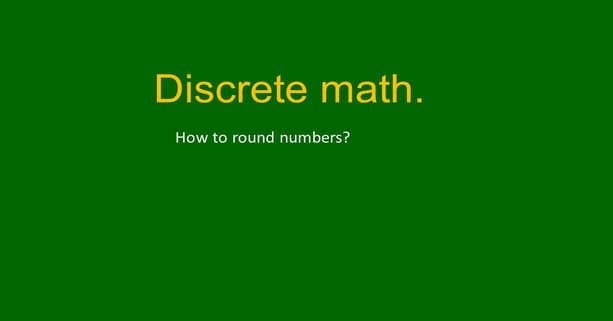Round numbers to Decimal points, Significant Digits.
How do we round numbers?
This is the fourth lecture about sets. This is the revision for the rounding of numbers. It is a part of discrete math. Make rounding, of the number of 28617 persons in a stadium. it is required to make rounding to the nearest 100.
The easiest way is to leave two numbers on the right side and make a line. If we let only one number it will be to the nearest tenth only. We have a number 1, which is <5, so 6 stays as it is, with no change Then the number 28617, will be rounded to 28600 to the nearest one hundred.
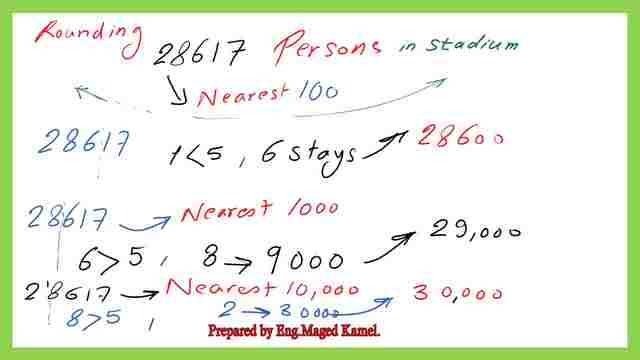

Rounding numbers to decimal points.
Let us check a new subject, which is rounding decimals. What is the decimal point? this point differentiates between the whole number at the left and the decimals at the right of it.
The number can be approximated to a decimal point. For counting numbers like 5 can be expressed as 5.0000.
To round to the nearest decimal point. The decimal point. One decimal point means considering only one decimal point. 8 is the nearest 1/10, we are saying 8/10, while 6 is the nearest 1/100, we are saying 6/100.
While for 4, we are saying 4/1000, 7, and 0.80, while the remaining is 86/100, 7.864, this 4/1000.
Rounding to 1 decimal point, means the nearest 1/10 assume you make a line between 8 and 6, consider 6 is bigger than 5, and 8 can be upgraded to 9. The final rounding of 7.864 is 7.90 to the nearest 1/10. The dot is the decimal point and at the right side of the point is the fraction. The whole number is the number at the left of the decimal point.
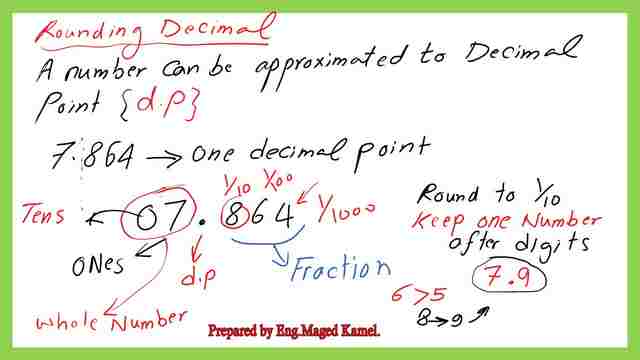

Solved examples for Rounding numbers to decimal points.
Another example, is Round 5.574 to the nearest 2 decimal points, and consider the decimal point. For the first 1 decimal means consider only one number which is 5.
For the two decimal points, consider the two numbers and check the third number which is 4. The rule is if the third number is < 5, then disregard it, if not increase the left number and upgrade. Sometimes, the expression of 2 (d.p) is used as an abbreviation for two decimal points.
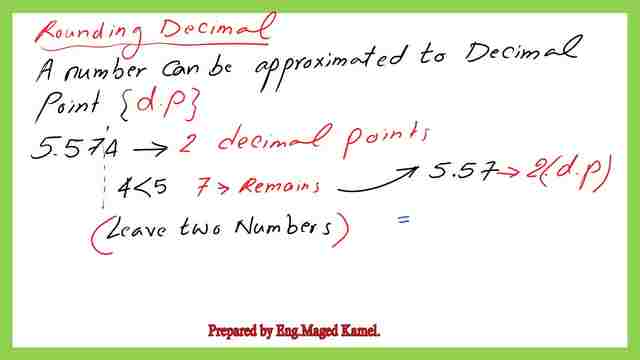

Another example:it is required to round 3.146. It is required to be rounded to hundreds, it will be rounded to 3.14 since it is required to have two decimal places. Why? because 1 is 1/10, while 4 is 4/100
1 is < 5, then 4 will not be changed. The same 3.1416 is to be rounded to thousands or (3)(d.p), then 6 is >5, then 1 will be upgraded to 2, and the final value is 3.142. The next item is the Significant figures, which are useful in experiments for persons dealing with accurate measurements. That is why it is called significant figures. This can count from left to right.
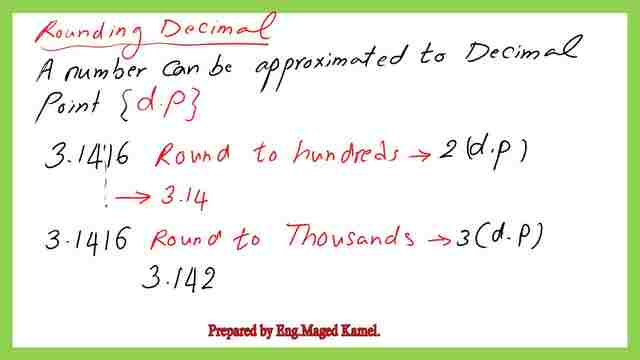

Rounding numbers to significant figures.
As an example 1.239. It is required to round to three significant digits. For counting the three digits start from the left and consider that 1 is the first significant figure.
Look at the right side of the third number and check that if the number is < 5, then the number will be unchanged. In our case, the 1.239 will be rounded to 1.24 since 9 is<5, which is three Significant digits.
Let us count as 123, while the decimal point is not counted.
For the same example round 134.9 to one scientific digit. Make a line separating the 1 and 3, since 3 is <5, then 1 will remain, and the rest will be zeros. We will not 100.0.In the case that the significant figure for a number starts with a zero. In that case, do not count the zero, but start with the first non-zero number and consider it as the first significant figure.
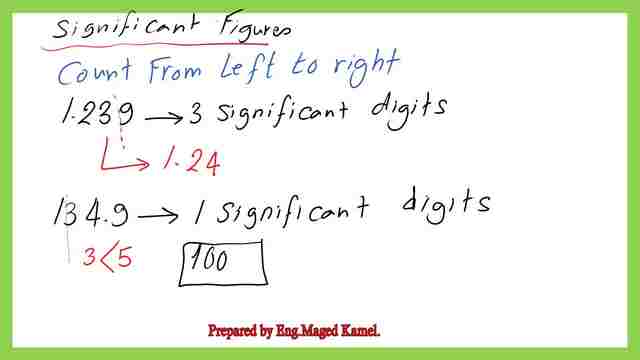

solved examples for Rounding significant figures.
For example, a given number is 0.0043, for which it is required to round to one significant. To solve we will forget the zeros and start with the first figure which is 4, check whether 5, if less than 5 then, keep 4 without an upgrade, the final rounded is 0.004.
No matter how are the numbers of zeros, start with the first non-zero element.
Another example round 0.0165, is required to round to two significant figures. Forget the zeros, the first figure is 1 and the second number is 6, for the third number is 5, which is =5. The 6 will be upgraded to 7. The two significant figures are 0.017.
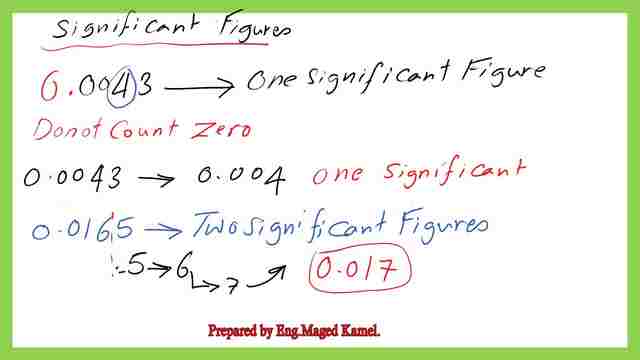

Rounding Numbers to the nearest whole number.
To round to the nearest whole number, as we agree before the decimal point separates the whole number at the left from the fraction or decimals at the right.
To round to the nearest whole number, check the number at the right side of the decimal point if<5 then disregard, but if=5>5 then upgrade. For our case, the 6 will be upgraded to 7. The nearest whole number will be 107. No fractions or decimals are to be included.
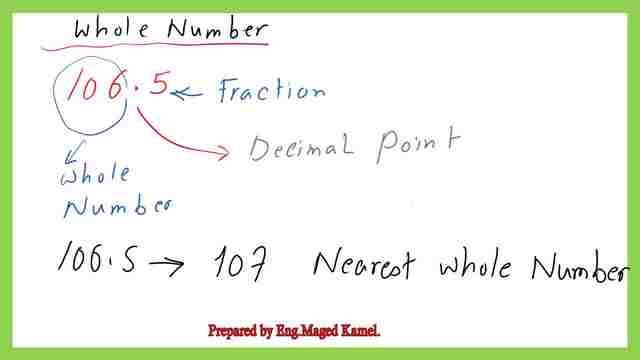

There is another example, round 239.4556 to the nearest hundred, this is a mixed number. For the nearest 100, the answer is to neglect the fraction. For the Nearest hundredth.
Make a line between 2 and 3, check 3 is<5, 2 will be left, and place 0 and 0 to the right, the round will be 200. There will be no fractions. The idea is to consider the whole number at the left of the decimal. Another example: Round 78.546 to the two decimal points, the result is shown in the slide image.
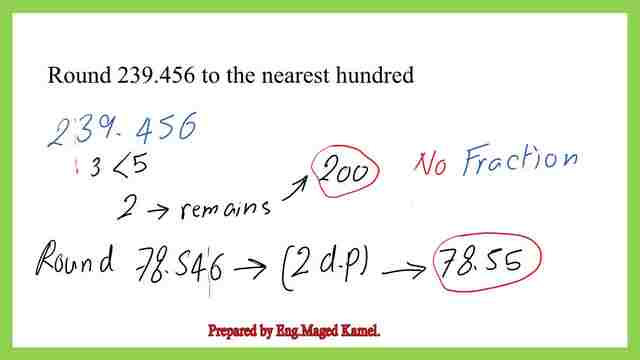

For an external link, math is fun for the Venn diagram.
The next post, Solved quizzes.
You can use a calculator from calculator soup for any number you wish to find the corresponding rounding.

